Machine Learning - week 2 - Multivariate Linear Regression
Gradient Descent in Practice - Feature Scaling
Make sure features are on a similar scale.
Features 的範圍越小,總的可能性就越小,計算速度就能加快。
Dividing by the range
通過 feature/range 使每個 feature 大概在 [-1, 1] 的範圍內
下題是一個例子:
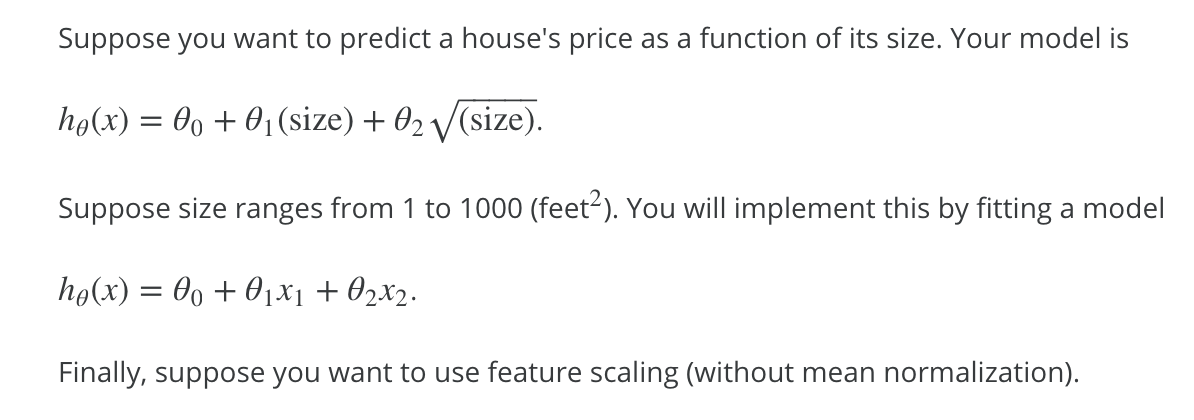

Mean normalization
將值變為接近 0。除了 x0,因為 x0 的值為 1。

mu1 是 average value of x1 in trainning sets;
S1 是 x1 的範圍大小,比如臥室是 [0, 5],那麽範圍為 5 - 0 = 5。
確保 gradient descent 工作正確
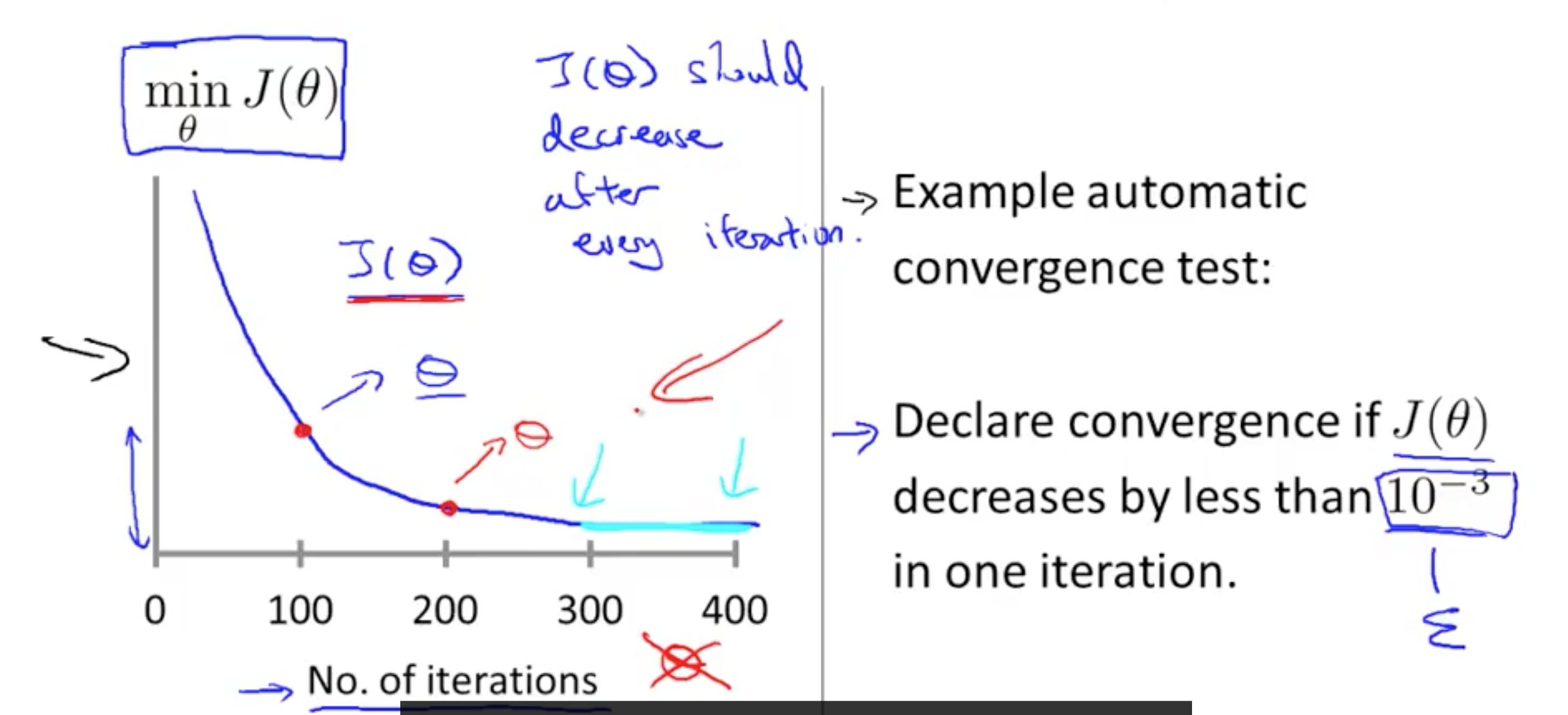
如上圖,這個圖像是正確的,隨著循環次數的增加,J(θ) 主鍵減小。超過一定循環次數之後,J(θ) 曲線趨於平緩。可以根據圖像得出什麽時候停止,或者當每次循環,J(θ) 的變化小於 ε 時停止。
圖像上升

說明 α 取值大了,應該減小。真實的圖像可能如下:
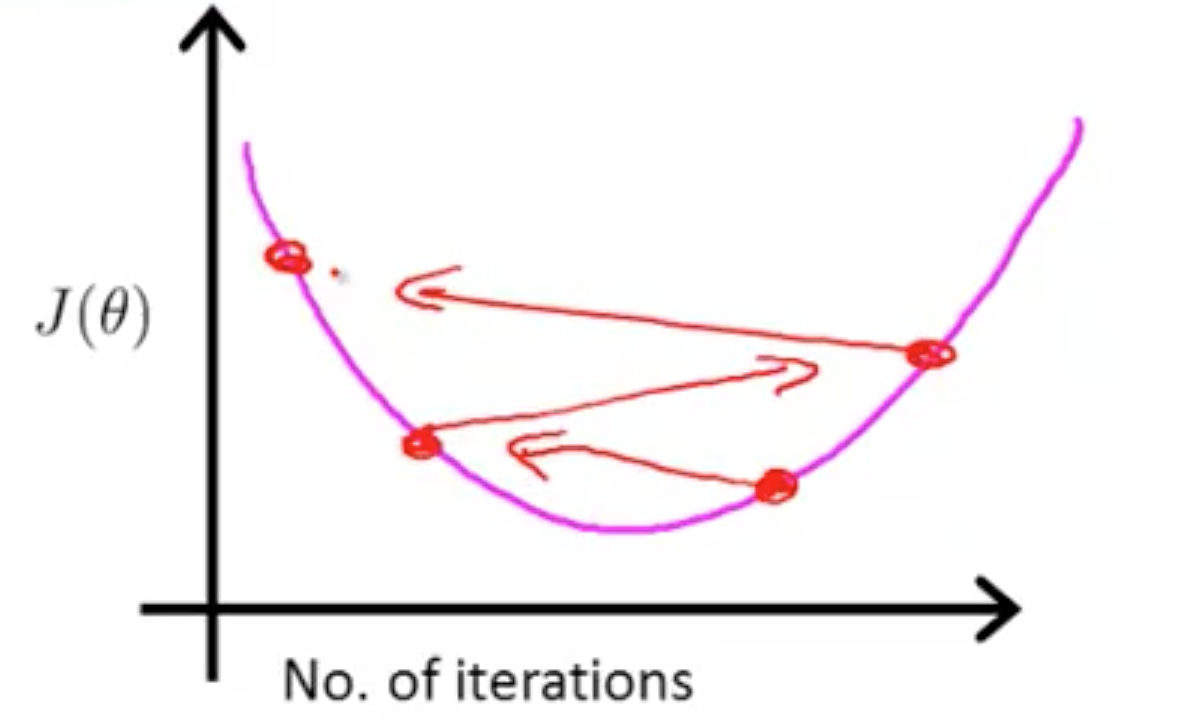
如果 α 足夠小,那麽能緩慢但完全覆蓋。
如果 α 太大:在每次循環時,可能不會減少從而不能完全覆蓋。
Features and polynomial regression
可以使用自定義的 features 而不是完全照搬已存在的 features。比如房子有長寬兩個屬性,我們可以創建一個新屬性--面積。然後,表達式變成
![]() ,但是這個曲線是先減小後增大的,與實際數據不符(面積越大,總價越高)。所以調整為
,但是這個曲線是先減小後增大的,與實際數據不符(面積越大,總價越高)。所以調整為
 。
。
Normal equation
Gradient Descent 隨著循環次數增加,逐步逼近最小值。如圖:
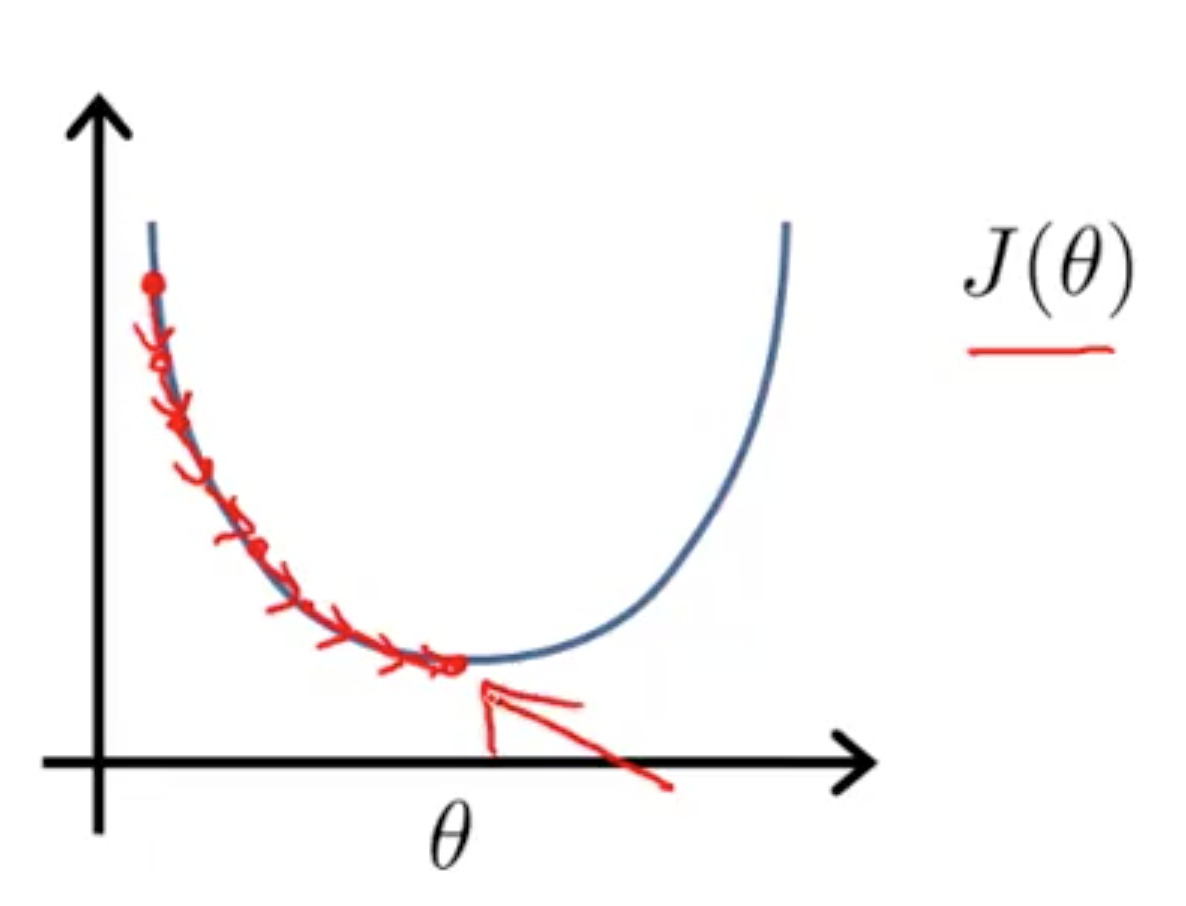
Normal equation 是通過方法直接計算出 θ。
導數為 0 時最小

然後解出 θ0 到 θn
求解 θ 的方程
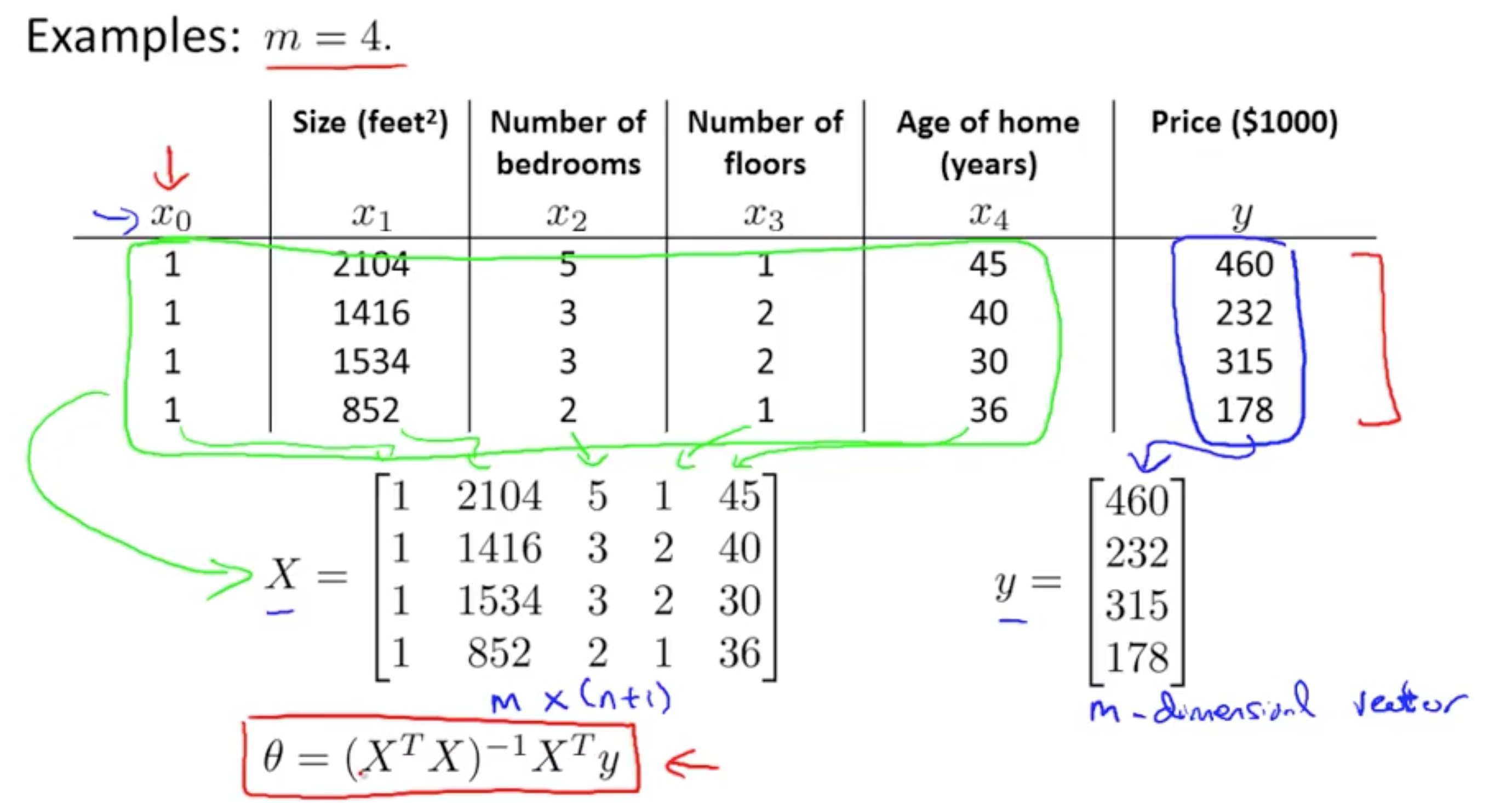
Matrix 概念見 Machine Learning - week 1
什麽時候用 Gradient Descent 或者 Normal Equation

當 n 較大時,右邊的會很慢,因為計算 ![]() 是 O(n3)
是 O(n3)
當 n 小的時候,右邊會更快,因為它是直接得出結果,不需要 iterations 或者 feature scaling。
如果 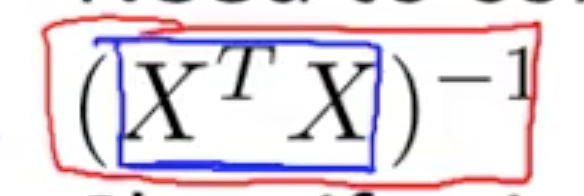 是 non-invertible?
是 non-invertible?
1. Redundant features (are not linearly independent).
E.g. x1 = size in feet2; x2 = size in m2
2. Too many features(e.g. m <= n)
比如 m = 10, n = 100,意思是你只有 10 個數據,但有 100 個 features,顯然,數據不足以覆蓋所有的 features。
可以刪除一些 features(只保留與數據相關的 features)或者使用 regularization。
習題
1. 
不知道如何同時使用兩種方法,這兩種方法是否是順序相關的?
使用 Dividing by the range
range = max - min = 8836 - 4761 = 4075
vector / range 後變為
1.9438
1.2721
2.1683
1.1683
對上述使用 mean normalization
avg = 1.6382
range = 2.1683 - 1.1683 = 1
x2(4) = (1.1683 - 1.6382) / 1 = -0.46990 保留兩位小數為 -0.47
5. 
上面提到了“Features 的範圍越小,總的可能性就越小,計算速度就能加快。”(多選題也可以單選)
Machine Learning - week 2 - Multivariate Linear Regression
